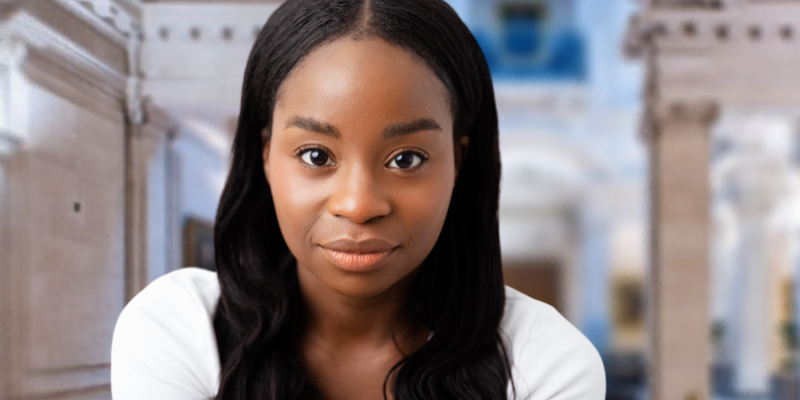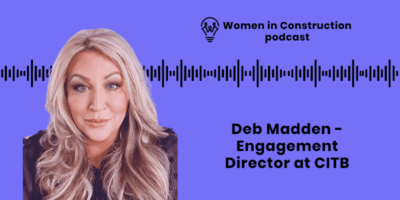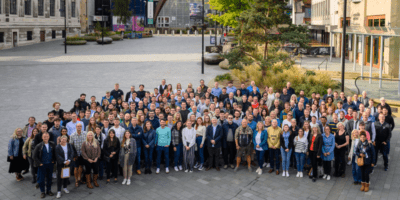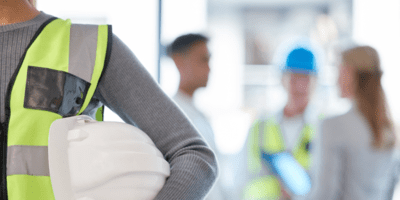Ayo Sokale is a Chartered Civil Engineer at the Environment Agency, where her work involves protecting people from flooding, improving biodiversity and protecting wildlife. In addition to this, Ayo is a TV presenter, author, environmental champion and former Deputy Mayor for Reading. Ayo also campaigns to debunk myths about living with autism, having received a diagnosis of Asperger’s syndrome.
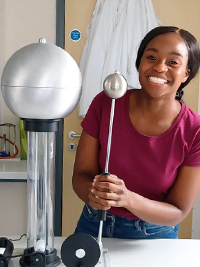
“When we’re facing a huge existential crisis — sustainability, climate change, climate justice, environmental justice — we can’t find new solutions and solve all these problems with a finite number of ideas from the same people.”
Witnessing the superpower that is engineering
I was inspired to become a civil engineer when I spent almost ten years being raised in Nigeria and I witnessed the power of engineering in developing nations. I marvelled at things that, in more developed countries, we sometimes take for granted — like opening a tap and getting fresh water, and being able to travel down the motorway. I saw the social benefit and I saw the health benefit. This highlighted for me the superpower that is engineering.
Building people better economic opportunities, social opportunities, and of course the sustainability element, using the sources of nature for the good of everyone in a sustainable way embodied what it is to be a civil engineer. It made me realise that was what I wanted to do with my life.
I always had a strong sense of purpose, living in a way that would make the world better because I existed, even as a child, so it was very clear that engineering was going to be a huge part of my journey, or at least the start of my journey.
Getting hands-on
I started off when I was a lot younger than most people who go into engineering because I knew what I wanted to do. When I came to the UK, I did a lot of courses from the age of maybe 12 or 13 until about 16. I began doing Headstart courses, WISE (Women in Science and Engineering) courses, BT entrepreneurial courses. I also did courses run by the Smallpeice Trust and the Engineering Development Trust.
By that point I’d also done some work experience at EAR Sheppard, a firm of civil and structural engineers in my hometown of Eastbourne. I worked with AutoCAD doing drawings and site surveys. I also shadowed an engineer and sat in on meetings during a tendering process. I was in my element!
I explored all types of engineering and so by the time I was 16, knew exactly what I wanted to do. My option choices were quite straightforward as you have to do the triple science, maths and English language and literature, but I chose geography as well as design technology to complement my passion for engineering and sustainability. All my options at GCSE were determined by my big objective to become an engineer.
At A-Level, I did maths, further maths, physics, chemistry and I also did geography for about six weeks, but five A-Levels were A LOT! So, I dropped geography to concentrate on my four STEM A-Levels, as I already kind of knew what I wanted to do.
Protecting people’s homes and livelihoods through flood risk management
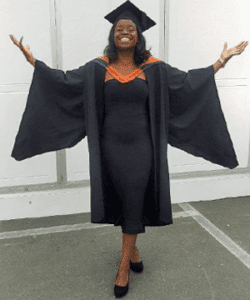
I worked there for a year and that’s where my dissertation came about, which got me really excited about the water part of engineering, which would lead to my career when I left university, with the Environment Agency.
I started out on their graduate training scheme, working in flood risk management, which took me back to my childhood when I experienced flooding in Ibadan, South Western Nigeria. Being able to protect five homes from flooding on my first project, and then scaling up to larger and larger projects meant I was living my dream, supporting the world around me in a magnificent way. That was the transition from the start of my educational journey to my career journey.
A truly dynamic career: The many facets of civil engineering
In my current role there really are no two days alike. At the very start of my career, I was doing different rotations. My first rotation was in programme contract management, where I worked on the delivery of major projects, managing them, working out the cost-benefit ratio, managing partnership funding, and then going out to consult residents and people in the community.
I have worked on-site and worked with design consultants. I have been involved in all stages of project delivery to put in place the best overall solutions for communities. An example of a project I worked on is the Tull Way Flood Alleviation Scheme. The community there had been flooded ten years before the scheme was delivered, with around 400 homes affected. Alongside colleagues I worked with local flood forums, councils and MPs to gather people’s views, find the right scheme and develop a strategy.
The projects have to go through various stages to get approval because we use public money. There are different stages of the business cases, and as we move through the design process, we develop more robust and more complicated scenarios to understand what is needed for the design so we work through all the options until we find the right solution.
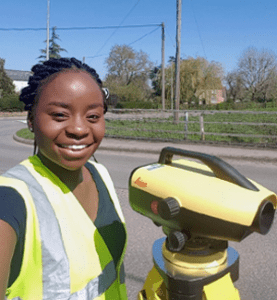
I now work on project team management, managing people as part of the local leadership team. I’m constantly doing different things and learning new things. Of course, in civil engineering, you can do so many different things. You can be the person who specialises in the commercial side or you can be the project manager, you can be the person on-site supervising construction. Throughout my career, I’ve done all these things.
I’ve been the manager managing every detail of a project until it’s delivered on-site. I’ve been the site supervisor making sure that what’s been designed in the drawing is what’s built on site so it meets quality assurance standards. If defects aren’t addressed quickly, they can soon become a massive issue.
I’ve also been the person looking at building information modelling to make sure that we have digital versions of everything, like a digital twin we’re building in real life so we can create efficiencies.
I’ve done all these incredible things under this overarching banner of being a civil engineer and making the world better through my effort. Every day is different and so I’m continually developing myself and my skills. It’s a truly dynamic career.
Diversity of thought is the answer
When we’re facing a huge existential crisis — sustainability, climate change, climate justice, environmental justice — we can’t find new solutions and solve all these problems with a finite number of ideas from the same people.
They can’t be solved either by excluding 50% of the population in women not doing STEM. Currently, I believe that the figure is about 11% of civil engineers in the UK are women. You can’t exclude people, but women have to want to get involved. That’s what I always have to caveat these things with. Everyone has the autonomy to find the things they want to be a master at. We can share our experiences about careers in engineering, but the individual has to want to embark on this path.
If we’re going to solve the biggest challenges on the planet today, we need a diverse range of minds, especially when it comes to climate change and social justice, environmental justice.
In a recent article for the ICE, Blessing Danha made the point that in a State of the Climate in Africa report that was released in 2019 it said that 3.8% of carbon emissions come from the continent of Africa, yet African countries face more consequences of our global emissions, with many communities at risk of things like devastating flooding, so they need to be part of the conversation.
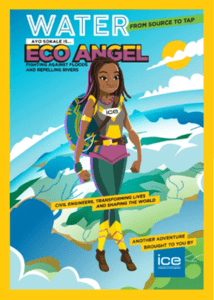
Becoming an ambassador for the Institution of Civil Engineers
I feel very driven to do the things that must be done. I get involved. I’ve been a STEM ambassador throughout university because I inherently knew that was important. You go and encourage people to open their eyes. Just because this career is out there it doesn’t mean it is going to be for everyone, or everyone’s going to be excited about it, but everyone should have the opportunity to hear about it, right? That’s what I thought was important.
When I was selected as one of Professor Lord Robert Mair’s Future Leaders (previously known as President’s Apprentice) for his year as president of the ICE, I was incredibly fortunate to have the opportunity to be mentored by him. I applied because it was an extraordinary opportunity.
Through that, I got to work on incredible things like the State of Nation Report on Infrastructure Investment, which looked into investment in infrastructure. During that time, I also worked on the ICE Review of Grenfell, a body of work led by Professor Peter Hansford that resulted in the report: In plain sight: reducing the risk of infrastructure failure. This was an important body of work.
I have a clear value system and determination which sees me deliver to the best of my ability. This track record has people coming back to engage in more opportunities.
Keep growing and evolving
I’m doing a lot of things at the moment, like writing my first book. I’m also doing some TV stuff. Just recently I filmed a new educational entertainment show for CBeebies. It’s for three to eight-year-olds go to see how exciting it is to learn from having fun. That comes out early next year. I also look forward to doing more to make engineering mainstream and accessible to everyone.
As I grow and develop, I’m constantly trying to become who I could be next and have the experiences that excite me. Who knows where I will be in ten years’ time? I know I will still be growing and evolving though because that’s part of the value system I have today. I’m very excited for my continuous development and enjoying the journey.
Reference links
- https://www.linkedin.com/in/ayo-sokale-ceng-mice-mapm-frsa-265bb940/
- https://www.ice.org.uk/what-is-civil-engineering/who-are-civil-engineers/ayo-sokale/
- https://www.instagram.com/officialayosokale/
- https://www.facebook.com/missayosokale/
- https://mobile.twitter.com/ayosokale
- https://www.ice.org.uk/
- https://twitter.com/ice_engineers
- https://www.linkedin.com/company/institution-of-civil-engineers
- https://www.instagram.com/ice_engineers/
- https://www.facebook.com/institutionofcivilengineers

